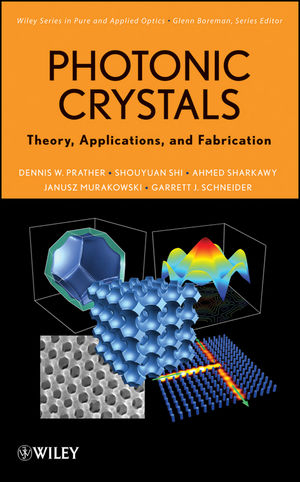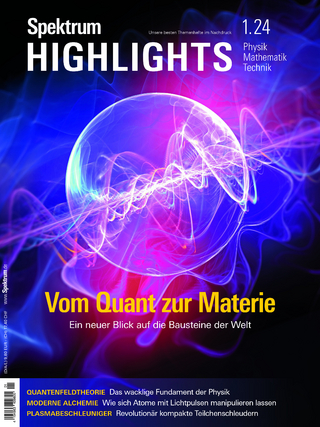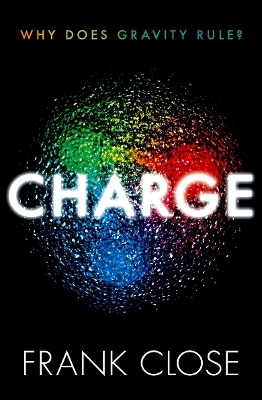
Photonic Crystals, Theory, Applications and Fabrication
John Wiley & Sons Inc (Verlag)
978-0-470-27803-1 (ISBN)
The Only Source You Need for Understanding the Design and Applications of Photonic Crystal-Based Devices This book presents in detail the fundamental theoretical background necessary to understand the unique optical phenomena arising from the crystalline nature of photonic-crystal structures and their application across a range of disciplines. Organized to take readers from basic concepts to more advanced topics, the book covers:
Preliminary concepts of electromagnetic waves and periodic media
Numerical methods for analyzing photonic-crystal structures
Devices and applications based on photonic bandgaps
Engineering photonic-crystal dispersion properties
Fabrication of two- and three-dimensional photonic crystals
The authors assume an elementary knowledge of electromagnetism, vector calculus, Fourier analysis, and complex number analysis. Therefore, the book is appropriate for advanced undergraduate students in physics, applied physics, optics, electronics, and chemical and electrical engineering, as well as graduate students and researchers in these fields.
DENNIS W. PRATHER, PHD, is a Professor in the Department of Electrical and Computer Engineering at the University of Delaware, where he leads the Laboratory for Nanoscale and Integrated Photonic Systems. Professor Prather is a Fellow of SPIE and OSA.
Chapter 1. Introduction 1
1.1 Historical Overview 3
1.2 Analogy Between Photonic and Semiconductor Crystals 6
1.3 Analyzing Photonic-Bandgap Structures 8
References 11
Chapter 2. Preliminary Concepts of Electromagnetic Waves and Periodic Media 17
2.1 Electromagnetic Waves 17
2.1.1 Maxwell’s Equations in Linear, Homogeneous Media 18
2.1.2 Electromagnetic Waves 21
2.1.3 Optical Waves 23
2.1.4 Guided Waves 28
2.1.5 Group Velocity in Homogeneous Media 37
2.2 Periodic Media 38
2.2.1 Real-Space Lattices, Lattice Vectors 39
2.2.2 Reciprocal Lattice and Brillouin Zone 47
2.3 Waves in Periodic Media 49
2.3.1 Wave Equation in Periodic Dielectric Structures 49
2.3.2 Group Velocity in Periodic Media 55
2.3.3 Dispersion Surfaces and Band Diagrams 57
References 60
Chapter 3. Numerical Methods 63
3.1 Overview 63
3.2 Plane-Wave Expansion Method 65
3.2.1 Preliminaries 65
3.2.2 One-Dimensional Plane-Wave Expansion Method 66
3.2.3 Two-Dimensional Plane-Wave Expansion Method 72
3.2.4 Three-Dimensional Plane-Wave Expansion Method 84
3.2.5 Practical Considerations in the Implementation of the Plane-Wave Expansion Method 87
3.2.6 Photonic-Crystal Slab by Plane-Wave Expansion Method 90
3.2.7 Revised Plane-Wave Method for Dispersive Material and its Application to Band-Structure Calculations of Photonic-Crystal Slabs 102
3.3 Finite-Difference Time-Domain (FDTD) Method 108
3.3.1 Central-Difference Expressions of Maxwell’s Equations 109
3.3.2 Two-Dimensional FDTD Method 110
3.3.3 Three-Dimensional FDTD Method 112
3.3.4 Numerical Stability and Dispersion 114
3.3.5 Simulating Transient and Steady-State System Response 116
3.3.6 Absorbing Boundary Conditions 118
3.3.7 FDTD for Photonic Crystals 122
References 125
Chapter 4. Devices and Applications Based on Photonic Bandgaps 133
4.1 Introduction 133
4.2 Point Defects 134
4.2.1 Numerical Analysis of Point Defects 134
4.2.2 Design Criteria for Photonic-Crystal Cavities 137
4.3 Line Defects 139
4.3.1 Photonic-Crystal Line Defects for Waveguiding 140
4.3.2 Line Defects in Photonic-Crystal Slabs 144
4.3.3 Extracting Dispersion Properties Using a Single-Frequency Source 147
4.4 Applications that Use Strong Confinement in PhC 150
4.4.1 Waveguide Bends 150
4.4.2 Zero-Cross-Talk Waveguide Crossing 154
4.4.3 Narrow-Band Beam Splitter 156
4.4.4 Air-Bridge Microcavity 157
4.4.5 Channel-Drop Filters in Photonic Crystals 159
4.4.6 Optical Spectrometer 160
4.4.7 Hybrid Photonic-Crystal Structures 163
4.4.8 Electrically and Thermally Tunable Photonic Crystals 168
4.4.9 Photonic-Crystal Optical Networks 169
4.4.10 Coupled Photonic-Crystal Waveguides 171
4.4.11 Other Applications of Photonic Bandgap 188
References 189
Chapter 5. Engineering Photonic-Crystal Dispersion Properties 197
5.1 Introduction 197
5.2 Dispersion in Photonic Crystals 198
5.3 Superprism Effect 201
5.4 Self-Collimation 205
5.4.1 Experimental Demonstration of Self-Collimation 208
5.4.2 Self-Guiding Heterolattice 211
5.4.3 Redirecting Light in Self-Collimating PhCs 214
5.4.4 Beam Splitting in Self-Collimating PhC 217
5.4.5 Optical Analog-to-Digital Converter 224
5.4.6 Self-Collimation in Three-Dimensional Photonic Crystals 231
5.4.7 Experimental Verification of 3D Self-Collimation 239
5.5 Left-Handed Behavior and Negative Refraction 245
5.5.1 3D Subwavelength Imaging by a Photonic-Crystal Flat Lens 247
5.6 Superprism, Negative Refraction and Self-Collimation 254
5.7 Summary 259
References 259
Chapter 6. Fabrication 263
6.1 Two-Dimensional Photonic Crystals 263
6.1.1 Fabrication of Planar Photonic Crystals 266
6.1.2 Fabrication of 2D Photonic Crystals 269
6.2 Three-Dimensional Photonic Crystals: Micromachining 274
6.2.1 Layer-by-Layer Fabrication 274
6.2.2 Woodpile Photonic Crystals 281
6.2.3 Autocloning Technique 297
6.2.4 Glancing Angle Deposition (GLAD) 307
6.2.5 Macroporous Silicon 313
6.2.6 Realizing Yablonovite for Near Infrared with Chemically Assisted Ion-Beam Etching 323
6.2.7 Sculpting Bulk Silicon with Reactive Plasma 327
6.3 Three-Dimensional Photonic Crystals: Holographic Lithography 333
6.3.1 Interference of Coherent Waves 334
6.3.2 Patterning PhCs with Interference Lithography 336
6.3.3 Engineering the Interference Pattern 336
6.3.4 Holographic Fabrication Methods for 3D PhCs 341
6.3.5 Summary 349
6.4 Three-Dimensional Photonic Crystals: Multiphoton Polymerization 350
6.4.1 Stereolithography/Laser Rapid Prototyping to Fabricate Arbitrary 3D Structures 350
6.4.2 Multiphoton Absorption 350
6.4.3 PhC Fabrication Using Multiphoton Absorption 356
6.5 Three-Dimensional Photonic Crystals: Self-Assembly 358
6.5.1 Monodisperse Colloidal Suspensions 359
6.5.2 Colloidal Crystallization 362
6.5.3 Self-Assembly Methods 364
References 369
Index 383
| Erscheint lt. Verlag | 5.6.2009 |
|---|---|
| Reihe/Serie | Wiley Series in Pure and Applied Optics |
| Verlagsort | New York |
| Sprache | englisch |
| Maße | 160 x 243 mm |
| Gewicht | 685 g |
| Themenwelt | Naturwissenschaften ► Physik / Astronomie ► Hochenergiephysik / Teilchenphysik |
| Technik ► Elektrotechnik / Energietechnik | |
| ISBN-10 | 0-470-27803-X / 047027803X |
| ISBN-13 | 978-0-470-27803-1 / 9780470278031 |
| Zustand | Neuware |
| Haben Sie eine Frage zum Produkt? |
aus dem Bereich


